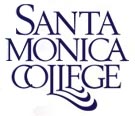By Jorge Casuso
May 23, 2025 -- The Santa Monica Pier is the second most polluted beach on the West Coast, topped only by Mexico's Playa Blanca, a beach contaminated by untreated sewage from the Tijuana region, according to Heal the Bay's 2024-25 Beach Report.
Released Thursday, the report ranked the Pier as more polluted than the Tijuana River Mouth, which topped the notorious Beach Bummer list last year with "tens of millions of gallons of untreated sewage flowing into the ocean each year."
"People who come in contact with ocean water near the Pier face serious risks of contracting stomach flu, ear infections, upper respiratory infections, and rashes," Heal the Bay said in a press release announcing the results.
The Pier's string of F grades and consistent ranking near the top of the Beach Bummer list -- based on bacteria levels during dry weather months from April to October -- earned an unusual rebuke from the Santa Monica-based environmental advocacy group.
"Every day, families who visit Santa Monica Pier for a day of fun in the sun, may be unknowingly risking illness by splashing in polluted waters," said Heal the Bay CEO Tracy Quinn.
"It's time for the City of Santa Monica to prioritize efforts to identify bacteria levels at the Santa Monica Pier," Quinn said.
City officials on Friday noted that the Pier receives more than 10 million visitors a year and that the area included in the Beach Bummer listing encompasses only the ocean water 100 yards north and south of the Pier along the beach's 3-mile coastline.
"Santa Monica’s beaches are wide and expansive, and the majority of our three miles of coastline is highly rated by Heal the Bay," officials said in a statement.
Other stretches of Santa Monica Beach consistently receive an A' or A+ for water quality during dry summer weather ("Water Quality Under Pier Gives Santa Monica Beaches a Bum Rap, City Officials Say," August 21, 2023).
The Pier's consistent raking among the West Coast's most polluted beaches is largely due to debris from large crowds, fecal matter from birds and its proximity to the Pico Kentor storm drain, which receives runoff that carries bacteria.
The high levels of bacteria persist despite more than $100 million spent by the City over the last seven years to protect Santa Monica Bay and improve beach water quality.
The City, the report states, "has invested millions to address the problem, including upgrades to stormwater capture systems and bird deterrent netting.
"But inconsistent maintenance of the netting and urban runoff from the Pier remains a challenge," the report said. "The limited effectiveness of current measures highlights the need for increased mediation."
As an example, the report notes that "the disposal of fish guts from recreational fishing attracts seabirds, and the lack of enforcement around these activities contributes to contamination."
City officials said they have been working in partnership with Heal the Bay and other entities to continue to "research and implement new strategies to address the ocean water quality directly underneath the Santa Monica Pier."
"Piers can pose a unique challenge due to poor ocean water mixing," officials said. "The city's Office of Sustainability is working with researchers studying piers up and down the West Coast.
"This work includes mapping underwater and surface currents at the Santa Monica Pier."
In its statement Friday, City officials said that "caring for the natural environment are core values in Santa Monica and we thank Heal the Bay for their continued advocacy and partnership to ensure our beaches are clean and safe."
Heal the Bay's annual Beach Report Card assigns A-to-F grades for 700 beaches from Washington State to Tijuana, Mexico, including 500 California beaches. The grades are based on levels of fecal-indicator bacterial pollution in the ocean measured by County health agencies.
Editor's note: This article has updated at 9:30 a.m. Friday to include comments from the City



